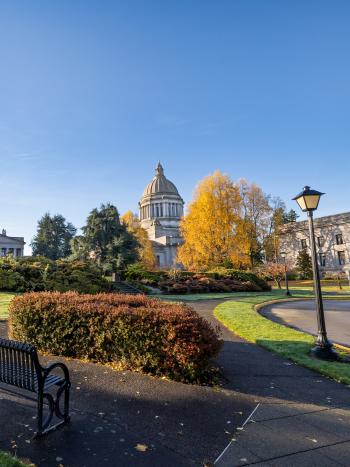Celebrating Urban and Community Forestry Month: A growing legacy of tree diversity

Explore over 120 tree types on Capitol Campus.
October is Urban and Community Forestry Month and we’re proud to celebrate a milestone in sustainable landscape management. As part of the state’s commitment to climate resiliency, sustainability and ecological stewardship, we now have more than 120 different types of trees on Capitol Campus.
By adding genetic diversity to the trees we plant, we’re providing a greater chance that more trees can handle the changing climate conditions. We’re helping the environment stay strong against climate change, pests, and disease, while enhancing the beauty and biodiversity of the campus. If we planted all the same types of trees, it increases the risk that one challenge to their conditions could wipe out the entire tree population. Learn more about the benefits of tree diversity.
This strategy is part of the Capitol Campus Urban Forestry Management Plan, which guides long-term planting and care for the trees on the 143-acre campus.
This plan continues the work of the Olmsted Brothers, the landscape architects who designed the original layout for West Capitol Campus in 1929. Their approach emphasized carefully choosing plants, creating peaceful spaces, and designing landscapes that have timeless beauty. They emphasized selecting plants that could handle local conditions and offered seasonal and sensory interest. These principles still shape the campus today, nearly 100 years later.
Visitors can experience this living legacy firsthand. The first trees to begin showing their fall colors are the native vine maples, followed by a parade of beautiful colors across the campus and parks well into November.
DES horticulturist and grounds property manager Brent Chapman, PhD offers a tip for visitors: “One of the most reliable and spectacular color displays on campus are the sugar maples along Maple Park Avenue.”
From oak trees to unique species like ginkgo and dawn redwood, Capitol Campus offers a rich tapestry of trees that reflect both historical intent and modern sustainability.
Learn more about urban forestry on Capitol Campus.
Contact Us
DES Communications
media@des.wa.gov
360-407-9300

